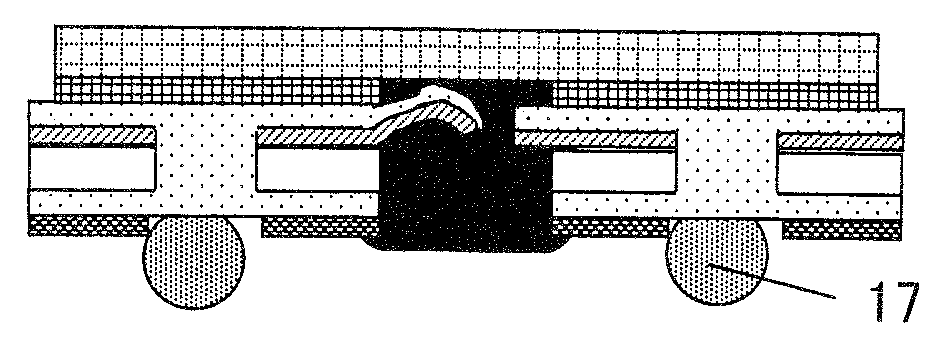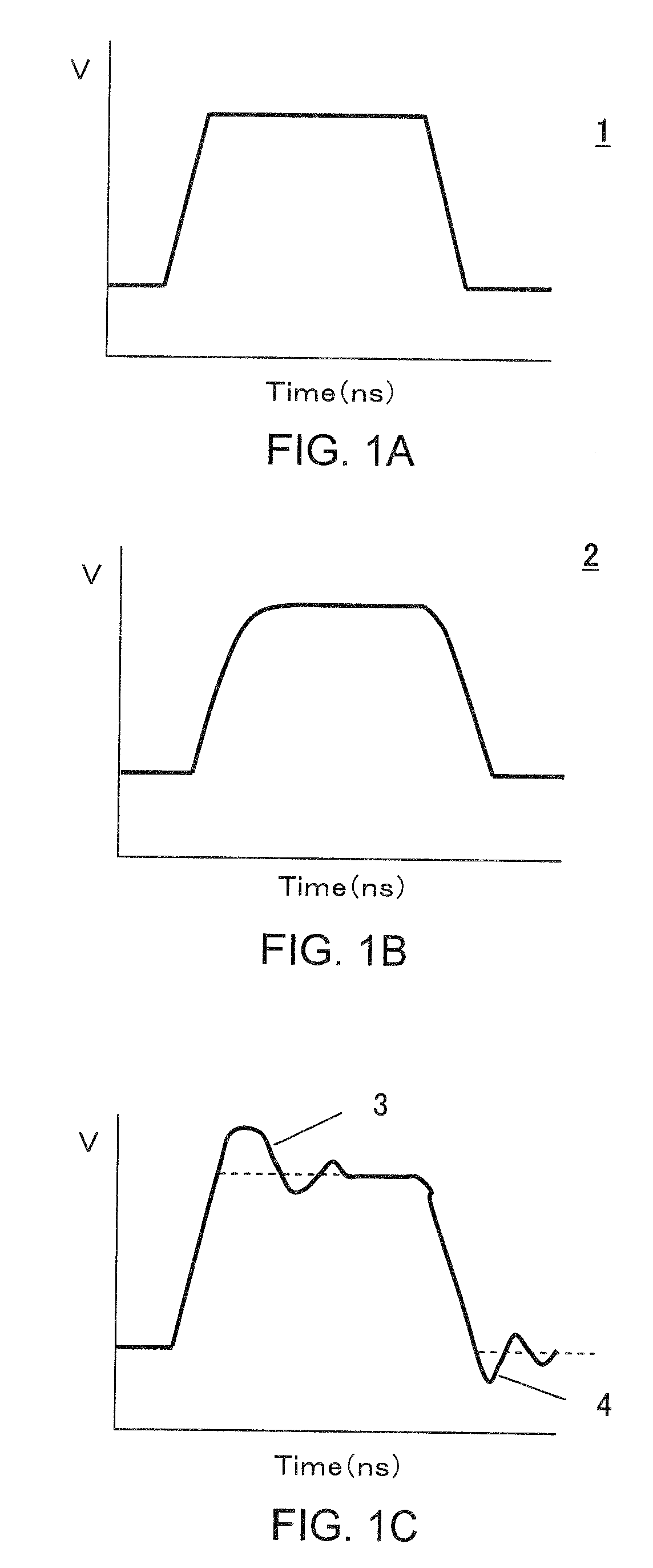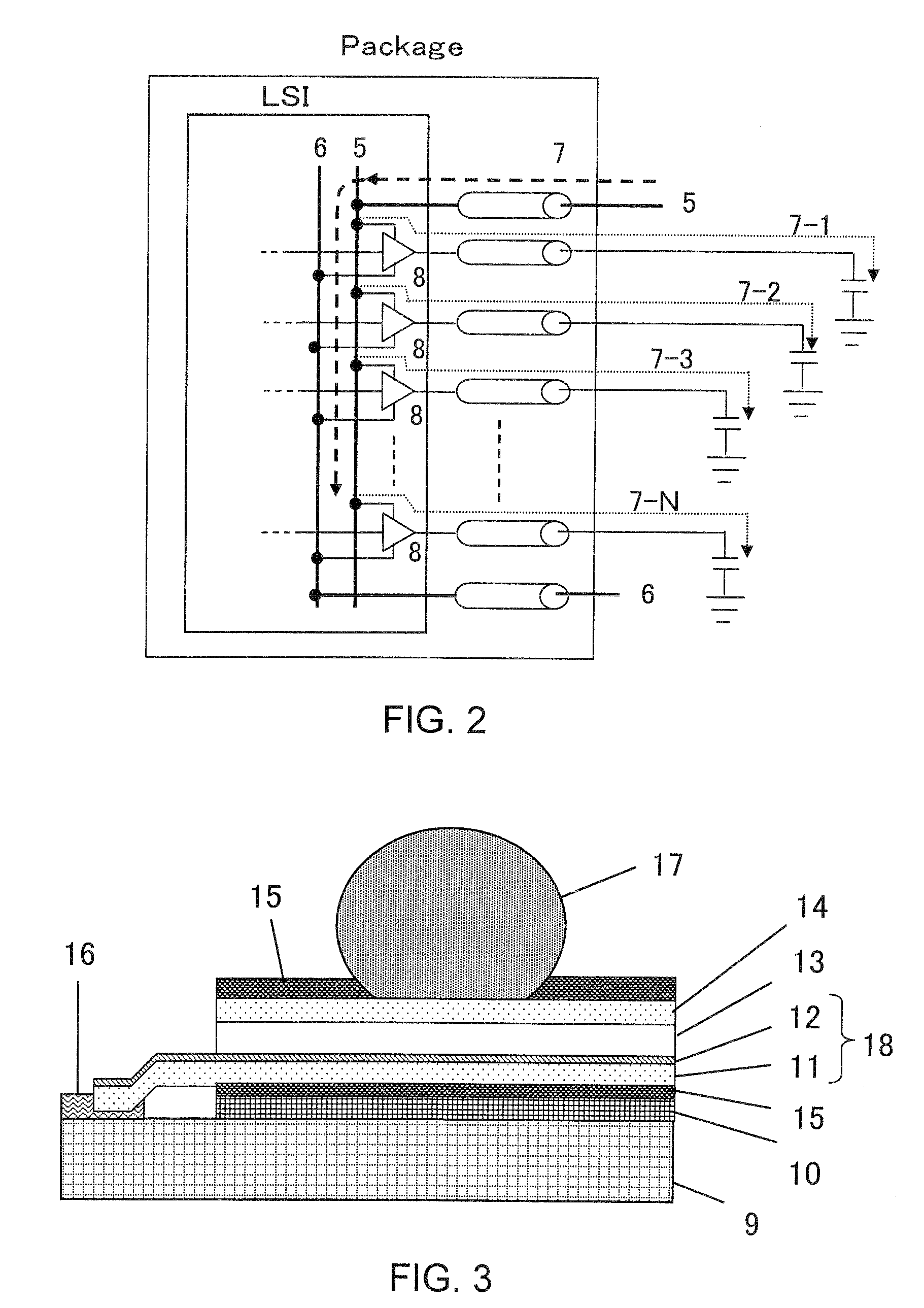Semiconductor device
a technology of semiconductor devices and resistors, applied in semiconductor devices, semiconductor/solid-state device details, electrical apparatus, etc., can solve the problems of increasing unwanted effects, power consumption, and inability to arrange a sufficient number of bypass capacitors and damping resistors, so as to reduce signal noise efficiently, high resistance, and high resistance
- Summary
- Abstract
- Description
- Claims
- Application Information
AI Technical Summary
Benefits of technology
Problems solved by technology
Method used
Image
Examples
first exemplary embodiment
[0033]A semiconductor device according to first exemplary embodiment of the present invention will be described in detail with reference to FIGS. 3 to 8. FIG. 3 is a cross-sectional view showing a semiconductor device mounted on a two-layer wiring package substrate. FIGS. 4 to 6 are cross-sectional views or a plan view showing the respective manufacturing steps of the semiconductor device. FIG. 7 is a graph illustrating transmission loss between signal lines and a ground plane. FIG. 8 is a graph illustrating skin depth (depth at which current flows) depending on wiring materials of the package substrate.
[0034]FIG. 3 is a cross-sectional view of a semiconductor device according to the first exemplary embodiment of the present invention. The reference numeral 9 denotes a semiconductor chip, 10 denotes an elastomer, 11 denotes a predetermined resistance material layer. Herein, the predetermined resistance material layer may be, for example, a copper (Cu) layer which has a thickness of ...
second exemplary embodiment
[0045]A semiconductor device according to a second exemplary embodiment of the present invention will be described with reference to FIGS. 9 to 14. The second exemplary embodiment relates to a semiconductor device mounted on a single-layer wiring package substrate in which a high resistance material layer is provided only on a required side face or faces of each signal line. FIG. 9 is a cross-sectional view showing a package substrate in which a high resistance material layer is formed on the both side faces of a signal line. FIG. 10 is a cross-sectional view showing a package substrate in which a high resistance material layer is formed on the mutually facing side faces of adjacent differential signal lines. FIG. 11 is a cross-sectional view showing a package substrate in which differential signal lines are arranged between two ground lines, and a high resistance material layer is formed on the both side faces of the differential signal lines and on the side faces of the ground lin...
third exemplary embodiment
[0054]A semiconductor device according to a third exemplary embodiment of the present invention will be described with reference to FIG. 15. The third exemplary embodiment relates to a semiconductor device mounted on a double-layer wiring package substrate and provided with differential signal lines. FIG. 15 is a cross-sectional view of a package substrate in which the ground plane located between the differential signal lines is formed by a high resistance material layer. In the third exemplary embodiment as well, the predetermined or normal resistance material layer 11 is formed of a low resistance material such as Cu. that is commonly used low-resistance wiring material The high resistance material layer 12 is formed of a metal material having a higher resistance than Cu, for example of Omega-Ply RCM (trade name of Ni—P alloy manufactured by Omega Technology Corp.) or 42 alloy.
[0055]In FIG. 15, the reference numeral 21 denotes the normal resistance material layer (Cu) forming the...
PUM
 Login to View More
Login to View More Abstract
Description
Claims
Application Information
 Login to View More
Login to View More - R&D
- Intellectual Property
- Life Sciences
- Materials
- Tech Scout
- Unparalleled Data Quality
- Higher Quality Content
- 60% Fewer Hallucinations
Browse by: Latest US Patents, China's latest patents, Technical Efficacy Thesaurus, Application Domain, Technology Topic, Popular Technical Reports.
© 2025 PatSnap. All rights reserved.Legal|Privacy policy|Modern Slavery Act Transparency Statement|Sitemap|About US| Contact US: help@patsnap.com



